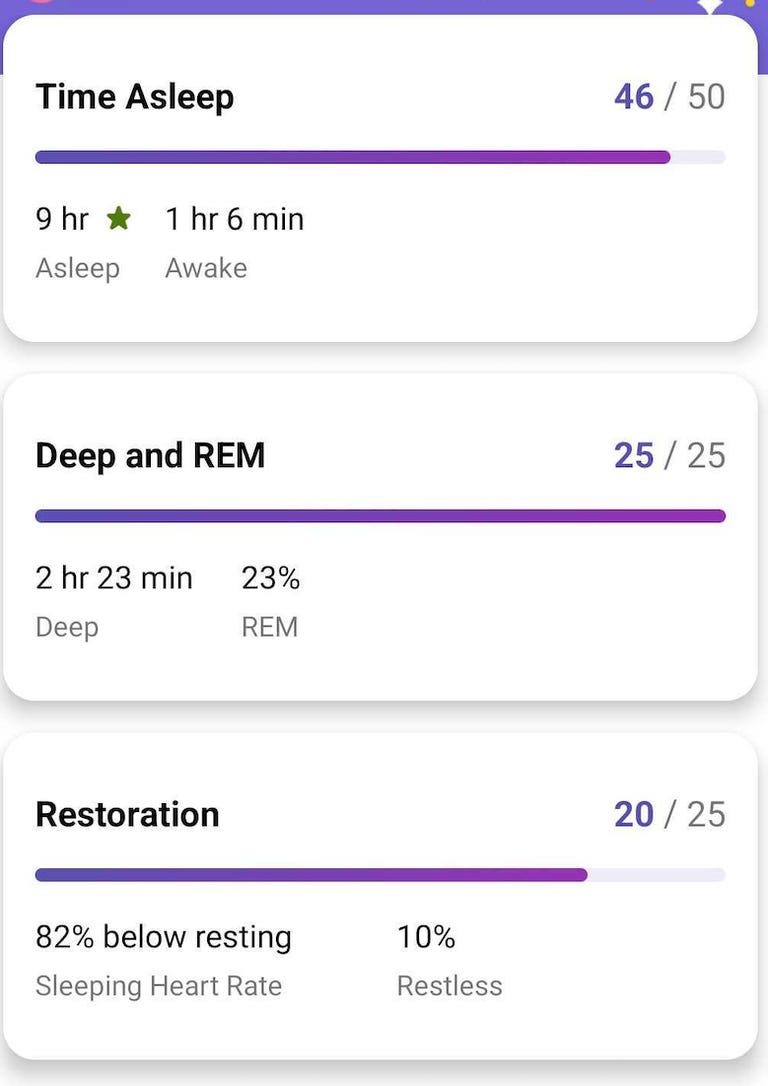Melatonin is one of the most popular natural sleep aids. Why? Because we all desperately want a good night’s sleep. Melatonin supplements can come in several forms: tablets, capsules, gummies and liquid. One of the newest forms is the melatonin dermal patch.
It’s the same concept as a nicotine patch. Put it somewhere veiny (like the inner forearm) and forget about it.
“Unlike oral supplements, melatonin patches work by absorbing through the skin rather than the GI tract. These patches are usually applied to the arm or chest, but once the melatonin is absorbed, it goes into the bloodstream where it circulates throughout your body,” said Dan Gartenberg, sleep science adviser at CPAP.com.
To get the full scoop on melatonin patches, I tried Fleur Marche’s Sleep, Plz wellness patch. Here’s how I slept and what you should know before trying one.
What is a melatonin patch?
Melatonin is a natural hormone that helps regulate your circadian rhythm or sleep-wake cycle. When it’s dark, our brain releases melatonin to help us fall asleep. This was a much simpler process when there weren’t things like phones and computers to release blue light and inhibit our natural cycle.
That’s where melatonin supplements come in. The artificial melatonin in supplements mimics the natural process and can help get your sleep back on track.
Read more: Best melatonin supplements
Melatonin patches are fast-acting supplements placed on the skin rather than taken orally. This is a significant benefit for people who want to maximize the effectiveness of their supplement. Oral melatonin supplements have a lower bioavailability, meaning a lot of the supplement is lost through metabolization. Patches have a higher bioavailability because the melatonin gets to the bloodstream faster and works for longer.
“The main benefit of using patches instead of oral melatonin is that patches release the supplement over a longer period of time,” Gartenberg said. “This can be particularly helpful for individuals who have insomnia or wake up in the middle of the night.”
Using a melatonin sleep patch
I tested the Fleur Marche’s Sleep, Plz wellness patches, 20mg melatonin and CBD patches that retail for $42 for an eight-pack. I’d never used any supplement patch before, so I wasn’t exactly sure what to expect.
However, I had high hopes since they are significantly more expensive than oral melatonin supplements. Nature Made, our pick for the best melatonin supplement, costs around $10 for a 90-day supply. An oral melatonin supplement of the same dosage is still cheaper, as is the case for the Now melatonin capsules that cost $15 on Amazon.
Each patch comes in a separate package. Inside, you’ll find the fabric-like patches on a plastic sheet. The feel of wearing them reminded me of a Band-Aid: at first, you’re very aware it’s on your skin, but then it fades into the background. The patch easily flexes to accommodate movement.

I slept longer and better than expected while wearing a Fleur Marche Sleep, Plz patch.
According to my previous days’ Fitbit data, I slept significantly better while wearing a melatonin sleep patch. I got much more deep and REM sleep and spent more time asleep.
Using the Fleur Marche Sleep patches was somewhat of a surreal experience because I got sleepy much quicker than expected after placing the patch. I also skipped the stage where I stared at my ceiling and hoped for sleep to come. I was just asleep.
For me, they worked well, and I experienced no negative side effects.
Do melatonin sleep patches really work?
While there is a ton of research on melatonin supplements, a focus on patches is needed since they are one of the newer forms. The research available is promising, according to Gartenberg.
“One small study found that melatonin patches may be effective for those who have irregular sleep patterns, such as night shift workers or people with jet lag,” Gartenberg said.
Dermal patches are a good option for people who tend to forget to take supplements or have a hard time swallowing pills. Sleep patches also come in handy in non-traditional schedules or changing time zones. They worked for me after a few bad nights of sleep while traveling.
Read more: Three supplements to try if melatonin doesn’t work for you
Many studies have found that lower doses of melatonin (one to three mg) are the most effective for regular use. However, as Gartenberg pointed out, there are instances where you may want to increase the dosage to account for abrupt shifts in your sleep-wake cycle. The Fleur Marche Sleep, Plz patches boast a hefty dose of 20 mg.
Melatonin patches aren’t for everyone
Like any other melatonin supplement, not everyone will like melatonin patches. From the sticky spot they may leave on your skin to remembering when you put it on, they can be a lot to deal with.
Beyond that, melatonin supplements come with potential side effects. According to Mayo Clinic, the side effects of melatonin supplements include but are not limited to:
- Stomach cramps
- Dizziness
- Diarrhea
- Constipation
- Brain fog or daytime drowsiness
- Decreased appetite
- Disorientation or confusion
- Mood swings
- Vivid dreams
Gartenberg suggested taking a lower dose to decrease the chances of experiencing adverse side effects.
“Keep in mind that melatonin patches can also contain added ingredients, such as gels or alcohols, which can cause skin irritation for some people. Additionally, people with skin sensitivities to adhesives should avoid using melatonin patches,” Gartenberg added.
Gartenberg also advises that people with certain conditions should avoid melatonin supplements and patches altogether. They are:
- Autoimmune conditions
- Kidney diseases or renal insufficiency
- Liver conditions
- Pregnancy and breastfeeding
- People with skin sensitivities
